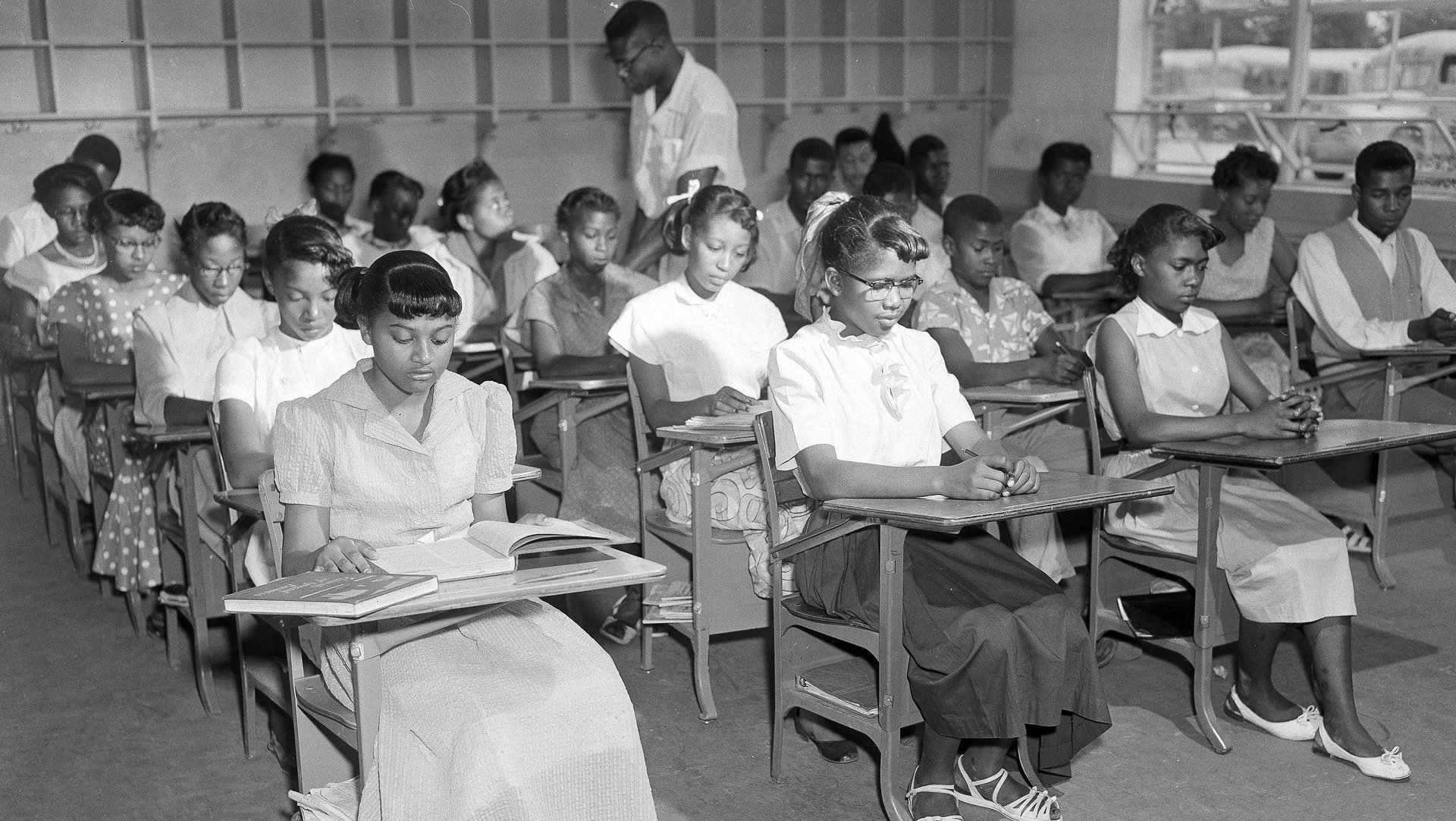A US judge ordered teenagers who vandalized a historic black school to read a list of seminal books about hatred and oppression
Four months ago, five American teenagers casually spray-painted swastikas and the words “white power” and “brown power” onto a small, wooden building in Loudon County, Virginia. For the next twelve months, the US court that tried them will make them feel the full weight of their actions, with a deep literary dive on history and oppression.


Four months ago, five American teenagers casually spray-painted swastikas and the words “white power” and “brown power” onto a small, wooden building in Loudon County, Virginia. For the next twelve months, the US court that tried them will make them feel the full weight of their actions, with a deep literary dive on history and oppression.
The building is the Ashburn Colored School, a historic one-room public schoolhouse that was used to educate black students in Jim Crow Virginia, now out of use and undergoing restoration. The 16 and 17-year-old boys who graffitied the building walls, two white and three “of a minority class,” didn’t appear to appreciate the significance of their actions, according to a statement released by the office of Virginia’s commonwealth attorney, which prosecutes crimes on behalf of the state. So on Feb. 1, Virginia said it would provide them with that insight, in the form of 12 book reports, and a trip to the Holocaust Museum.
Each teen was provided with a list of 35 approved books about topics like the Holocaust, American slavery, and the Taliban. Classics like Arthur Miller’s The Crucible and Toni Morrison’s The Bluest Eye are on the list, along with contemporary titles like Ta-Nehisi Coates’s The Beautiful Struggle and Colson Whitehead’s The Underground Railroad. The teens will each have to read one book from the list per month over the next year, and write a book report. They were also tasked with writing a research paper on the impact of racist messages, and are required to listen to a recorded interview of one of the students who attended the Ashburn school in the 1930s and 1940s.
“It occurred to me that the way these kids are going to learn about this stuff is if they read about it, more than anything,” Alejandra Rueda, the attorney who inspired the idea, told The New York Times. “Yes, they could walk into court and plead guilty and get put on probation and do some community service, but it wasn’t really going to bring the message home.”
Here are the books chosen by the commonwealth attorney’s office:
- The Color Purple, by Alice Walker
- Native Son, by Richard Wright
- Exodus, by Leon Uris
- Mila 18, by Leon Uris
- Trinity, by Leon Uris
- My Name Is Asher Lev, by Chaim Potok
- The Chosen, by Chaim Potok
- The Sun Also Rises, by Ernest Hemingway
- Night, by Elie Wiesel
- The Crucible, by Arthur Miller
- The Kite Runner, by Khaled Hosseini
- A Thousand Splendid Suns, by Khaled Hosseini
- Things Fall Apart, by Chinua Achebe
- The Handmaid’s Tale, by Margaret Atwood
- To Kill a Mockingbird, by Harper Lee
- I Know Why the Caged Bird Sings, by Maya Angelou
- The Immortal Life of Henrietta Lacks, by Rebecca Skloot
- Caleb’s Crossing, by Geraldine Brooks
- Tortilla Curtain, by T.C. Boyle
- The Bluest Eye, by Toni Morrison
- A Hope in the Unseen, by Ron Suskind
- Down These Mean Streets, by Piri Thomas
- Black Boy, by Richard Wright
- The Beautiful Struggle, by Ta-Nehisi Coates
- The Banality of Evil, by Hannah Arendt
- The Underground Railroad, by Colson Whitehead
- Reading Lolita in Tehran, by Azar Nafisi
- The Rape of Nanking, by Iris Chang
- Infidel, by Ayaan Hirsi Ali
- The Orphan Master’s Son, by Adam Johnson
- The Help, by Kathryn Stockett
- Cry the Beloved Country, by Alan Paton
- Too Late the Phalarope, by Alan Paton
- A Dry White Season, by André Brink
- Ghost Soldiers, by Hampton Sides